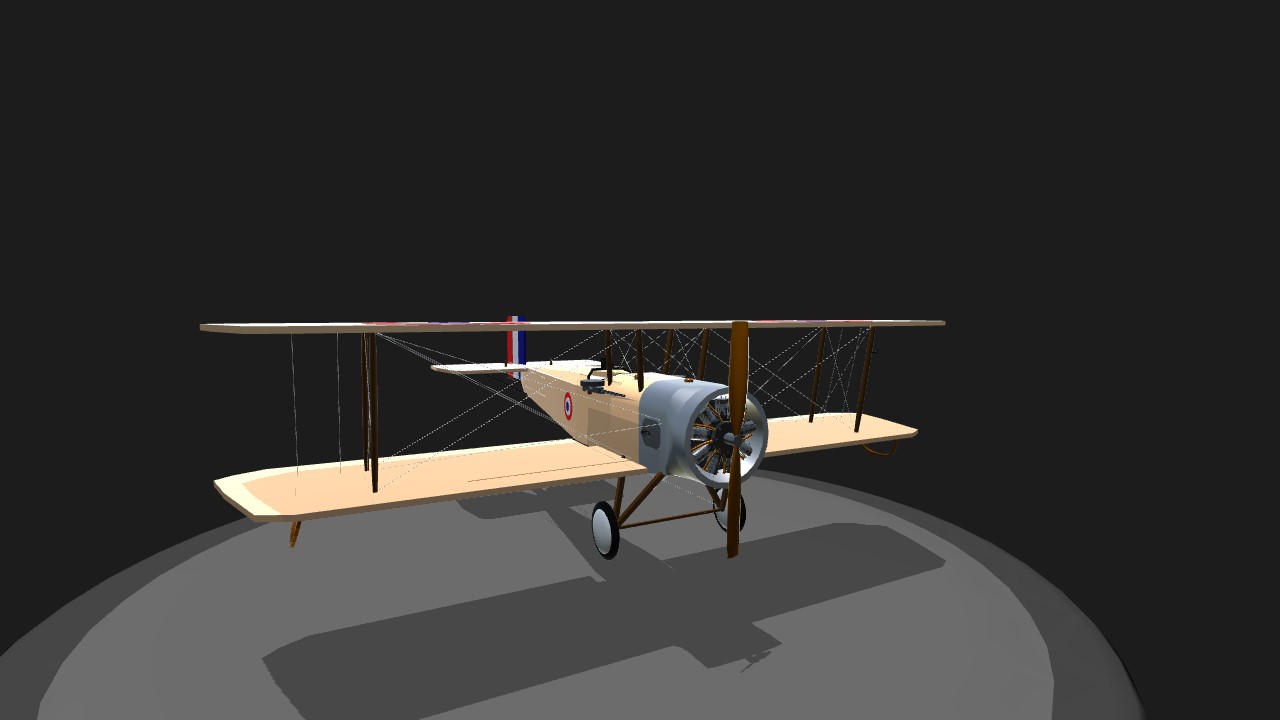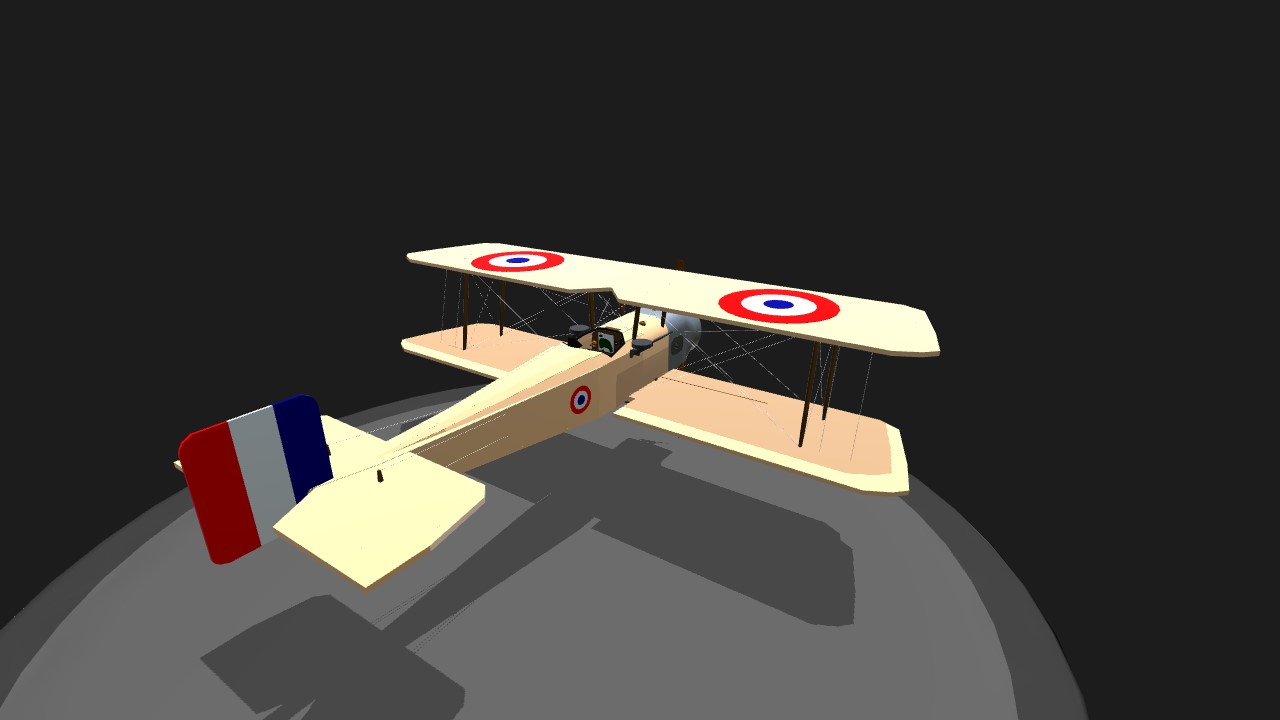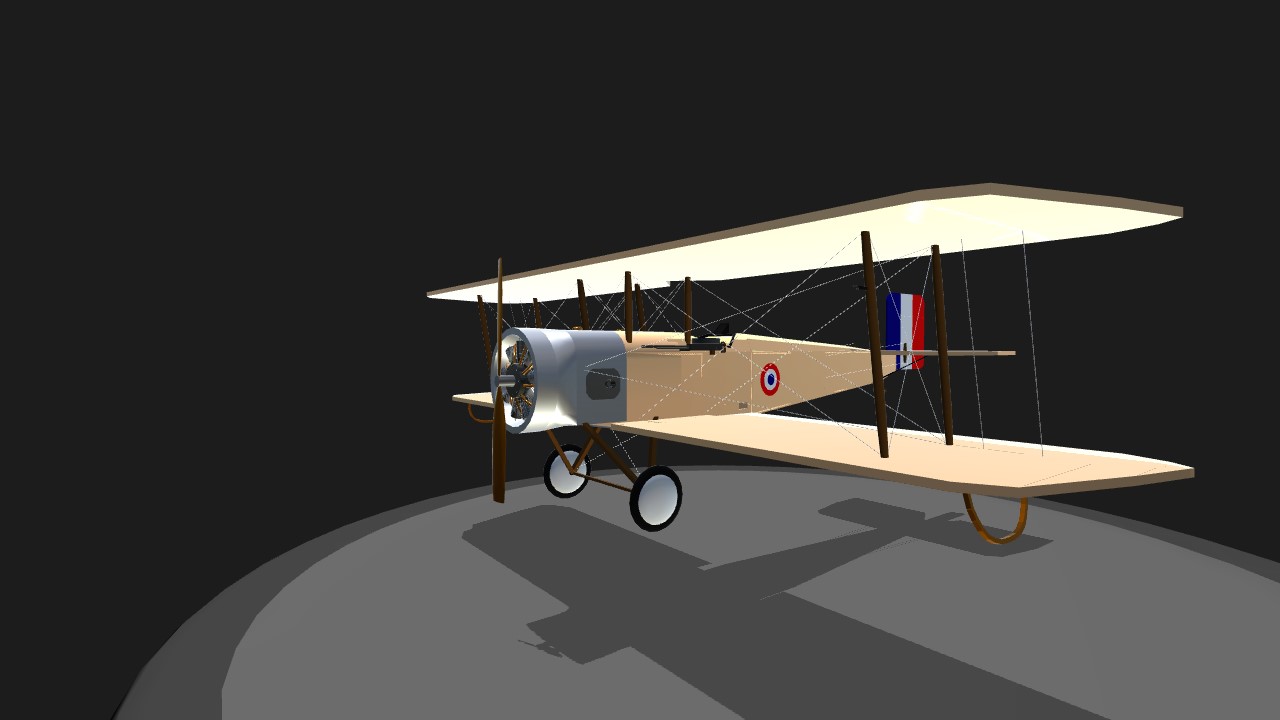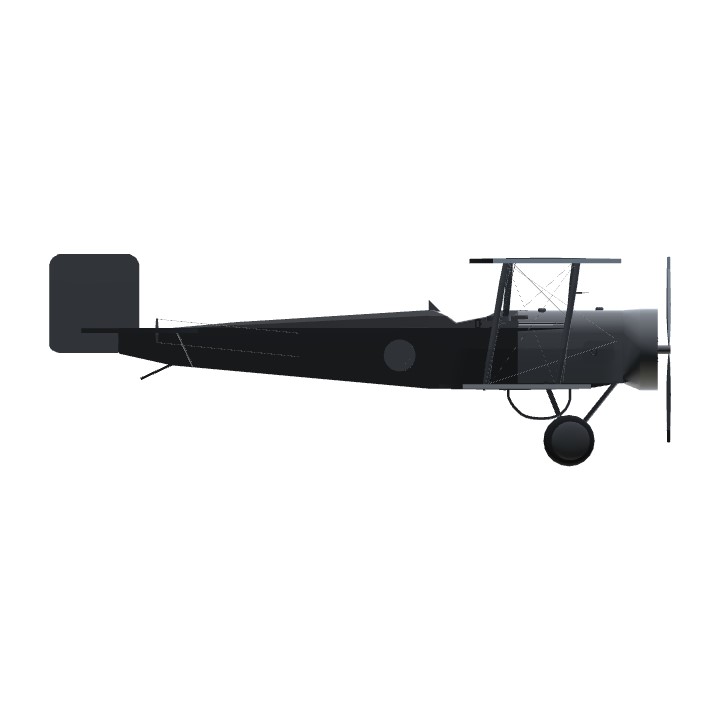INTRODUCING THE...
Bristol Scout
-By, PlanesOfOld-
1
: DISCLAIMER : Not intended for mobile use!
!!VERY IMPORTANT FLYING GUIDE!!
-To make controlling the realistic rotary engine 'easier'-
- Go into options and set
LandingGeartoCapsLock. - Be gentle...
- Give up hope of an efficient throttle system, this is a monosoupape rotary it has NO throttle, a total loss oil system and likes to spit boiling castor oil at your face!
-Controlling the engine-
VTOLIs your fuel mix adjuster, it acts as a weak form of throttle and is used mainly for adjusting cruise speed.LandingGearIs your blip-switch It is your most effective form of throttle, it turns the engine on and off and should mainly be used on landing.
-Takeoff Procedure-
VTOLShould be left in the middle.LandingGearShould be activated to start the engine.ActivationGroup: 8Should be De-Activated to stop the engine spinning around weirdly.
-In Flight-
VTOLCan be adjusted for preferred cruise speed.The scout is fully aerobatic!
-Landing Procedure-
- Land preferably on a flat grassy area.
- Approach: Shallow and low.
- To lose speed: Blip the engine by repeatedly tapping
CapsLock. - You can't mess it up unless you land upside-down.
-COMBAT-
- This plane is very agile and is armed with two forward firing lewis guns (with historically accurate firing characteristics!)
-THIS BUILD-
This is the third aeroplane in my !NEW! WWI series.
It was gathering dust for several months (I started it at the same time as the AVRO 504) after many frustrating attempts I finally fixed the diabolical handling issue that made it un-flyable turns out it was a messed up drag model!
It has 1061 parts!
-FEATURES-
- A replica 9 cylinder Clerget 9B rotary engine.
- Engine controls that are as realistic as I could get.
- A MAP
- Some fiddly dials that were very annoying to make.
- TWO BRASS SWITCHES!
- Nice rudder controls (a rarity)
- Two replica aviation lewis guns with cooling jackets removed
- MANY infuriating to make but pretty, WIRES!
-HISTORY-
-Design-
The scout was originally designed as a high performance sports aircraft, and at the start of the first world war it was the best performing aeroplane in Britain.
Impressed by the Bristol's performance the war office ordered 12 and the admiralty ordered 24 of them and they went into service with the RAC and the RNAS
Scout pilots armed their aircraft themselves, first with rifles on swivel mounts,
then with Lewis guns in various places.
Attempts were made to put a synchronized Vickers gun on the scout but the already small cockpit ended up being too small for most pilots to sit in as the mechanism pushed the instrument panel backwards. so most scouts were armed with Lewis guns firing outside the propeller, or like this one firing through the propeller, contrary to popular belief it is quite hard to shoot your own propeller off and a few holes didn't do much damage to the structural integrity of the prop. And to the WWI fighter pilot the advantage of having guns firing directly forwards outweighed the disadvantage of shooting your own propeller.
Firsts:
The scout was also the first aircraft (that wasn't a seaplane) to take off from a ship.
ENJOY! :D
IT WOULD BE MUCH APPRECIATED IF YOU LEAVE A COMMENT!
Specifications
General Characteristics
- Predecessor 1914 Bristol Scout
- Successors 1 airplane(s)
- Created On Windows
- Wingspan 36.9ft (11.2m)
- Length 31.8ft (9.7m)
- Height 10.9ft (3.3m)
- Empty Weight 11,731lbs (5,321kg)
- Loaded Weight 12,288lbs (5,573kg)
Performance
- Horse Power/Weight Ratio 0.081
- Wing Loading 3.4lbs/ft2 (16.6kg/m2)
- Wing Area 3,620.1ft2 (336.3m2)
- Drag Points 2456
Parts
- Number of Parts 1061
- Control Surfaces 18
- Performance Cost 2,971







I’m flying it just fine on mobile lol
@FreadDean Thanks!
Ah, I know what you mean, It's just sometimes this plane has a habit of doing a nose-over when you put the brakes on!
If you're interested about skids, I suggest you check out my AVRO 504 as it has both wing hoops (to stop the wings hitting the ground) and a big skid at the front to stop nose-overs. It really helps with landing these things sometimes. @CustomAircraftMods
@PlanesOfOld I’ve heard of lots of times when biplanes would accidentally flip onto their engines back in the beginning of flight. Of course by WW1, this was not a problem, but in the times of planes like the Bleriot Monoplane, they would have to fix skids just above the wheel axles to prevent the plane from flipping. Sorry for the confusion and awesome plane! Keep up the good work!
When did it do that? @CustomAircraftMods
Ahh.. the good ol times when your plane could suddenly flip forward onto its engine without warning... Nice plane though and keep up the good work
This is an amazing design! I love the old Monosoupape. My favorite engine of the First World War is the Gnome 9N, with it's lovely selector magneto "throttle" setup. That being said, I really do appreciate seeing some of the planes that weren't in the limelight throughout history. Early war planes are the best, I say!
By the way, back in the day, the Gnome company supposedly claimed that their engine could be throttled like their competitors- just lean out the mixture! What could possibly go wrong? Needless to say, the old 60 hp Gnome was reportedly famous for seizing due to lack of lubrication when leaned out for "throttle" control.
@ThePrototype Ive got some finished planes waiting to be uploaded, They include the RAF SE4a, RAF FE1, Sopwith tabloid and Caudron G.3
Nice, what other aircraft are you plannning on doing?
@BogdanX Thanks man!
Great job . Very nice replica .
Thanks @MisterT
Thanks chaps @RailfanEthan @Kungfuevan
Sweet beans
great looking build, i was planing on making it myself, to bad i can't fly it with my potato phone
@Tang0five Thanks!
@Grandmother Thanks
@EternalDarkness I'm not very good at making custom ones, I plan to use them on future builds but I need to practice.
Not bad. Still, 1000+ parts and stock ailerons...
@Supermini555 Thankyou!
@EternalDarkness Cheers m8
@Empanadinho Thanks!
@BaconAircraft Thank you!
@bjac0 Yes, I agree it is a rather spiffing kite! Thanks very much I say!